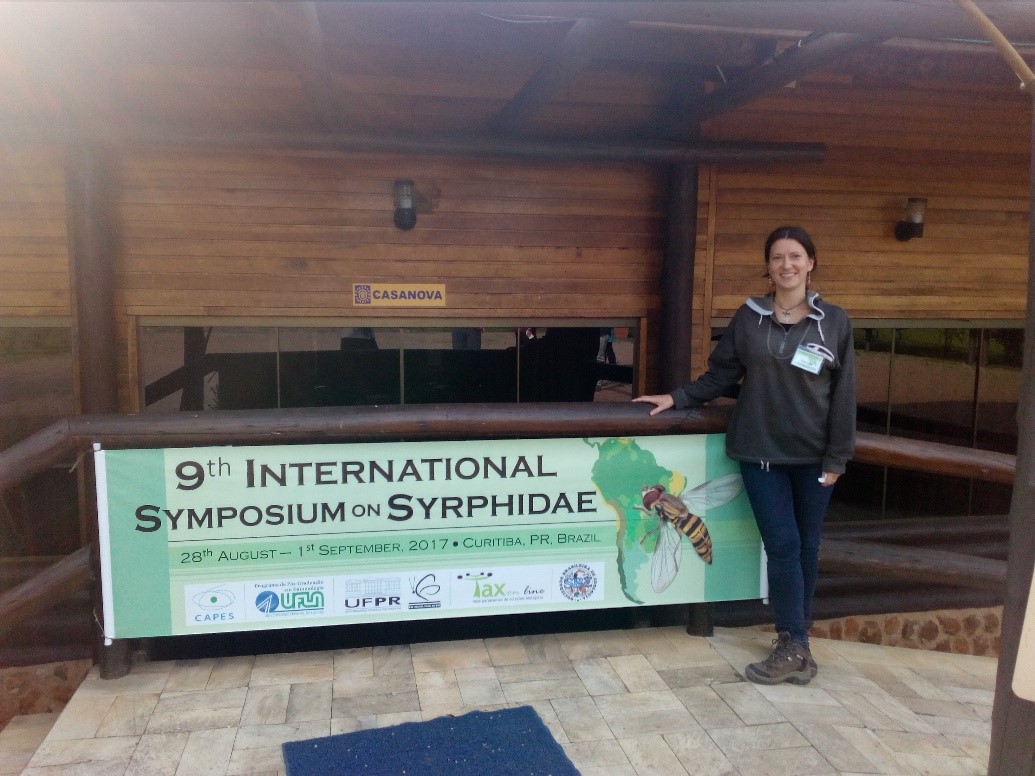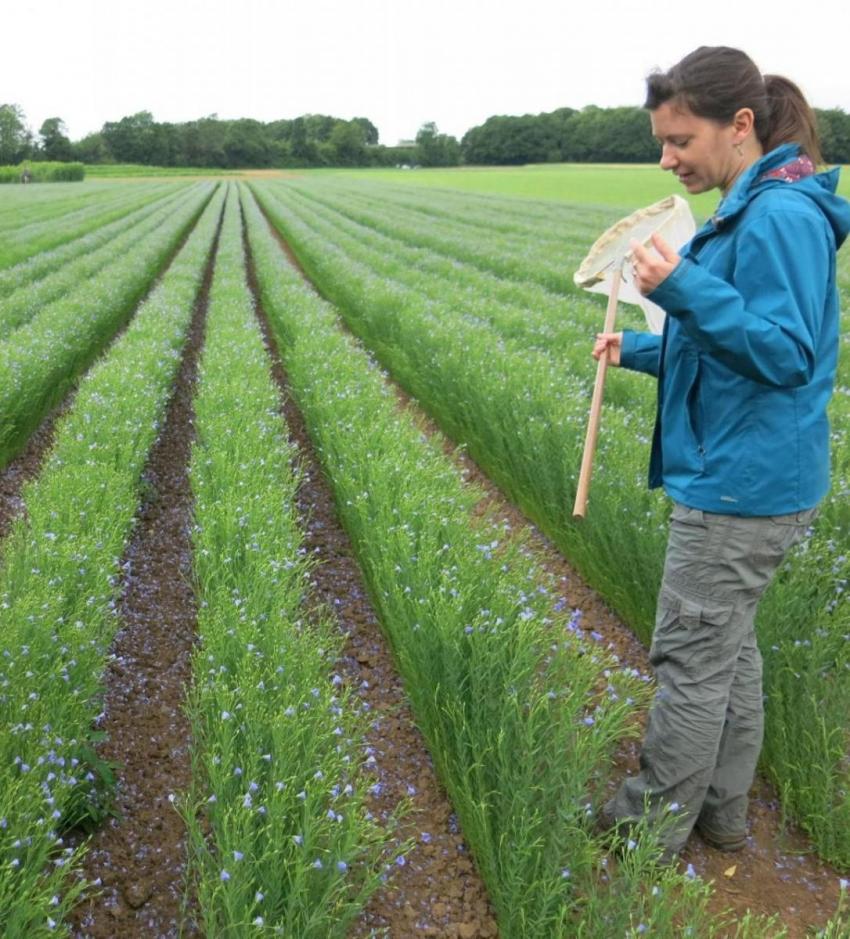Meet the Hoverfly Experts: Rita Földesi
This is the fourth in a series of interviews with the network of Hoverfly Experts involved in developing the IUCN’s European Red List (ERL) of Hoverflies. The project aims to assess the extinction risk of hoverfly species across Europe, and will contribute to guiding decisions and conservation action for these species at the European level.

Photo: Rita Földesi
Hoverflies are a group of important pollinators, recognised well by their hovering flight behaviour, their affinity for flowers and the stripy appearance they often have. Sometimes that can be mistaken for stinging insects like bees and wasps but actually they do not sting at all. Many hoverfly species evolved this stripy colouration as it helps to ward off predators. Read on below to find out more about Dr. Rita Földesi, her research and passion for hoverflies, and what you as a citizen can do to help conserve Europe’s hoverflies!
Dr. Rita Földesi’s research focuses on the ecology of hoverflies, especially on pollen consumption of the adults. She analyses the pollen grains from the digestive system of hoverflies in order to gain comprehensive knowledge about their resource of nutrition, such as which plant species they visit and feed on. As hoverflies are important pollinators (and ecosystem service providers), the data on flower visitation of adults can be used to determine their role in ecosystems.
Rita became interested in hoverflies after she had conducted research as a student, which focused on the identification of larvae Soldier flies (Stratiomyidae) in ponds in Hungary. “Before my PhD, I decided to keep focusing on flies but wanted to concentrate on the agricultural and ecosystem services provided by insects. Through this, I ‘encountered’ hoverflies and learned about their role as pollinators and how important they are as larvae in biological control of other invertebrates.” Many hoverfly species are predators during their larval stage, feeding on insects like aphids, which are often considered as pests. This make them important for keeping ecosystems, and agricultural landscapes, in balance.
Rita finds hoverflies very interesting in general and therefore does not have a favourite species. However, during her PhD she developed a strong relationship with the Marmalade Hoverfly (Episyrphus balteatus) (De Geer 1776), “I dissected specimens of Episyrphus balteatus in order to analyse the pollen grains from their digestive systems.” This work informed her thesis and, subsequently, drove her career towards hoverflies.
Hoverflies are important to study and understand because of the crucial role they play in their ecosystems. Hoverflies are pollinators of many crops and wild plant species and the larvae, especially the aphidophagous species, have an essential role as being biological control agents. Nowadays, hoverflies research has developed further in ecological science, yet knowledge gaps still remain that require more investigation in the future.
 Photo: Rita Földesi
Photo: Rita Földesi
Rita is very concerned about the future of hoverflies in Europe, “Studies have shown that species richness and abundance of hoverflies are in decline because of loss of habitat as well as the intensification of agriculture and chemical usage (among others).” She argues that this decline will continue to grow in the future – unless action is taken.
And, how can individual citizens of Europe help with the conservation of hoverflies?
Well, firstly, she states, “urban gardens could provide shelter and foraging places for hoverflies. Secondly, using fewer pesticides to control aphids as well as allowing undisturbed places in the city and in our gardens to grow. Plants should rot and not be removed from undistributed areas as rotting wood can provided resources for larval development, as an example. By following these steps, urban habitats can be more hospitable for hoverflies. Finally, Aphid colonies provide essential resources for hoverfly larvae, which can effectively decrease the population of aphids.”
Rita became involved with the IUCN following the 9th International Symposium on Syrphidae in Brazil in 2017, where she heard about the organisation for the first time. Following this, she was given the opportunity to get involved in the European Red List of Hoverflies project through her colleague and fellow red list assessor, Axel Ssymank, “I am very grateful for the opportunity to become one of the species assessors and to be involved in the hoverfly’s assessment process at the IUCN.”



